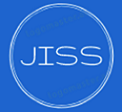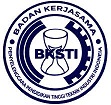Halal control point (HCP) analysis in the raw material supply chain using the failure mode effect and criticality analysis (FMECA) method
Abstract
The growing demand for halal-certified food in institutional food services underscores the importance of structured risk management across the raw material supply chain. Despite regulatory requirements, many food service providers still face challenges in identifying and controlling halal-related risks, particularly in upstream processes. This study employed a cross-sectional design and applied the Failure Mode, Effects, and Criticality Analysis (FMECA) method to assess and prioritize halal risks across eight categories of raw materials. Data were collected from 30 respondents, including procurement staff, team leaders, and crew members, using structured questionnaires and interviews. Risk Priority Numbers (RPNs) were calculated based on severity, occurrence, and detection scores. The findings showed that meat and meat products had the highest RPN (94), indicating a tolerable but high-priority risk requiring strict control measures during procurement. Other categories, such as extra food, snacks, vegetables, fruits, spices, side dishes, and rice, were classified as acceptable risks but still require regular monitoring. These results highlight the effectiveness of the FMECA method in identifying critical Halal Control Points (HCPs) and supporting risk-based decision-making within halal assurance systems. Institutional food service providers are encouraged to adopt quantitative methods, such as FMECA, to enhance the effectiveness of halal risk mitigation strategies. Further studies with a broader scope and cross-industry comparisons are needed to strengthen halal integrity across diverse supply chain contexts.
Keywords
Full Text:
PDFReferences
S. Sadeeqa, A. Sarrif, I. Masood, F. Saleem, and M. Atif, “Knowledge, attitude and perception (KAP) regarding halal pharmaceuticals among general public in Penang state of Malaysia,” Int. J. Public Health Sci., vol. 2, no. 4, pp. 347–356, Dec. 2013, doi: 10.11591/ijphs.v2i4.4226.
L. Mutmainah, “The role of religiosity, halal awareness, halal certification, and food ingredients on purchase intention of halal food,” Ihtifaz: J. Islamic Econ., Finance, Banking, vol. 1, no. 1, pp. 33–50, Jun. 2018, doi: 10.12928/ijiefb.v1i1.284.
S. M. Jannah and H. Al-Banna, “Halal awareness and halal traceability: Muslim consumers’ and entrepreneurs’ perspectives,” J. Islamic Monetary Econ. Finance, vol. 7, no. 2, pp. 285–316, May 2021, doi: 10.21098/jimf.v7i2.1328.
A. Hermawan, “Consumer protection perception of halal food products in Indonesia,” KnE Social Sci., vol. 2020, pp. 235–246, Jun. 2020, doi: 10.18502/kss.v4i9.7329.
M. Ali, K. Tan, and M. Ismail, “A supply chain integrity framework for halal food,” British Food J., vol. 119, no. 1, pp. 20–38, Jan. 2017, doi: 10.1108/BFJ-07-2016-0345.
Y. H. Mohamed, A. R. Abdul Rahim, and A. Ma’aram, “The effect of halal supply chain management on halal integrity assurance for the food industry in Malaysia,” J. Islamic Marketing, vol. 12, no. 9, pp. 1734–1750, Nov. 2021, doi: 10.1108/JIMA-12-2018-0240.
S. Naeem, R. M. Ayyub, I. Ishaq, S. Sadiq, and T. Mahmood, “Systematic literature review of halal food consumption: Qualitative research era 1990-2017,” J. Islamic Marketing, vol. 11, no. 3, pp. 687–707, Jun. 2020, doi: 10.1108/JIMA-09-2018-0163.
M. I. Khan, S. Khan, and A. Haleem, “Analysing barriers towards management of halal supply chain: A BWM approach,” J. Islamic Marketing, vol. 13, no. 1, pp. 66–80, Jan. 2022, doi: 10.1108/JIMA-09-2018-0178.
A. Rejeb, J. G. Keogh, K. Rejeb, and K. Dean, “Halal food supply chains: A literature review of sustainable measures and future research directions,” Foods Raw Mater., vol. 9, no. 1, pp. 106–116, Jan. 2021, doi: 10.21603/2308-4057-2021-1-106-116.
M. Bahrudin, M. Iqbal, G. U. Saefurrohman, and J. Walsh, “Halal food industry: Reinforcing the halal product assurance organizing body (BPJPH) in the development of the among urban Muslim community in Indonesia,” Akademika: J. Pemikiran Islam, vol. 29, no. 1, pp. 61–74, Jan. 2024, doi: 10.32332/akademika.v29i1.9039.
J. Akbar et al., “Global trends in halal food standards: A review,” Foods, vol. 12, no. 23, pp. 1–15, Nov. 2023, doi: 10.3390/foods12234200.
P. RI, “UU No. 33 Tahun 2014,” Undang-Undang Republik Indonesia, no. 1, pp. 1–63, Oct. 2014.
E. Saepudin, “Proceedings of Sharia Economic Law Faculty of Islamic Religion Universitas Muhammadiyah Purwokerto,” in Proc. Series Social Sci. Humanities, vol. 5, pp. 420–426, Dec. 2020.
Kuncorosidi and M. S. Wiguna, “Bibliometric analysis integrating halal supply chain and circular economy principles,” Islamic Econ., Accounting, Manag. J., vol. 5, no. 2, pp. 1–12, Aug. 2024. [Online]. Available: https://ojs.stiesa.ac.id/index.php/tsarwatica
C. A. Annabi and O. O. Ibidapo-Obe, “Halal certification organizations in the United Kingdom,” J. Islamic Marketing, vol. 8, no. 1, pp. 107–126, Mar. 2017, doi: 10.1108/JIMA-06-2015-0045.
D. Sunarsi et al., “Effect of e-leadership style, organizational commitment and service quality towards Indonesian school performance,” Systematic Reviews Pharmacy, vol. 11, no. 10, pp. 472–481, Oct. 2020, doi: 10.31838/srp.2020.10.71.
Y. A. Aziz and N. V. Chok, “The role of halal awareness, halal certification, and marketing components in determining halal purchase intention among non-Muslims in Malaysia: A structural equation modeling approach,” J. Int. Food Agribusiness Marketing, vol. 25, no. 1, pp. 1–23, Jan. 2013, doi: 10.1080/08974438.2013.723997.
M. S. Ab Talib, A. B. A. Hamid, and M. H. Zulfakar, “Halal supply chain critical success factors: A literature review,” J. Islamic Marketing, vol. 6, no. 1, pp. 44–71, Apr. 2015, doi: 10.1108/JIMA-07-2013-0049.
H. H. Adinugraha, M. Sartika, and A. H. A. Ulama’i, “Halal lifestyle di Indonesia,” J. Ekon. Syariah, vol. 4, no. 1, pp. 200–224, Apr. 2019.
G. Frunză, “(FMEA) methodology to improve meat products quality,” J. Food Sci. Technol., vol. 64, no. 2, pp. 123–130, Feb. 2021.
D. Hermansyah, Machfud, M. Romli, and Muslich, “Critical safety points in handling fresh fruits and vegetables throughout the supply chain,” IOP Conf. Series: Earth Environ. Sci., vol. 1460, no. 1, p. 012055, Jan. 2025, doi: 10.1088/1755-1315/1460/1/012055.
S. Gunardi, M. A. Abdul Rab, and Y. H. Mohd Safian, “A study on the management of halal logistics in Malaysia: Issues, challenges and solutions from fatwas analysis and Islamic scholars,” Seybold Report, vol. 17, no. 11, pp. 1461–1473, Nov. 2022, doi: 10.5281/zenodo.7360839.
Y. H. Mohamed, M. F. Abdul Fattah, A. M. Hassan, M. H. Rani, and F. Puteh, “Impact of halal supply chain management on halal integrity in Malaysia’s TVET food industry,” J. Tech. Educ. Training, vol. 16, no. 2, pp. 231–240, Jun. 2024, doi: 10.30880/JTET.2024.16.02.020.
M. B. Kiran, “A review of failure mode effect and criticality analysis (FMECA),” in Proc. Int. Conf. Adv. Eng. Technol., 2023, pp. 4506–4512, doi: 10.46254/an12.20220873.
L. Bai, C. Shi, Y. Guo, Q. Du, and Y. Huang, “Quality risk evaluation of the food supply chain using a fuzzy comprehensive evaluation model and failure mode, effects, and criticality analysis,” J. Food Quality, vol. 2018, pp. 1–10, Aug. 2018, doi: 10.1155/2018/2637075.
S. Boubaker, S. Dumondelle, and P. Dolatineghabadi, “An approach to assess risks related to information system in supply chain,” in IFIP Adv. Inf. Commun. Technol., vol. 634, 2021, pp. 425–434, doi: 10.1007/978-3-030-85914-5_46.
Y. Wang, K. Chin, G. Ka, K. Poon, and J. Yang, “Risk evaluation in failure mode and effects analysis using fuzzy weighted geometric mean,” Expert Syst. Appl., vol. 36, no. 2, pp. 1195–1207, Mar. 2009, doi: 10.1016/j.eswa.2007.11.028.
A. N. Islamadina and I. Vanany, “A proposed risk model for the halal supply chain,” in Proc. IEOM Soc. Int., 2021, pp. 1325–1336.
M. H. Ramli, A. S. Rosman, and M. A. Jamaludin, “Application of FMEA method in halal risk determination on halal poultry slaughtering operations,” J. Fatwa Manag. Res., vol. 29, no. 3, pp. 1–30, Sep. 2024, doi: 10.33102/jfatwa.vol29no3.587.
H. C. Wahyuni, M. A. Rosid, R. Azara, and A. Voak, “Blockchain technology design based on food safety and halal risk analysis in the beef supply chain with FMEA-FTA,” J. Eng. Res., vol. 12, no. 2, pp. 1–12, Jun. 2024, doi: 10.1016/j.jer.2024.02.002.
DOI: http://dx.doi.org/10.62870/jiss.v11i1.33435
Refbacks
- There are currently no refbacks.
 is supported by
is supported by








